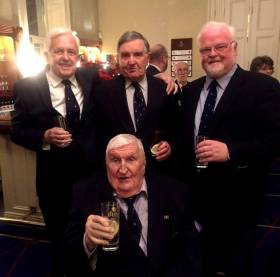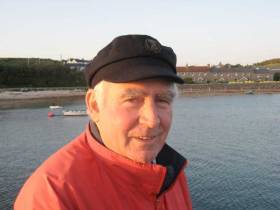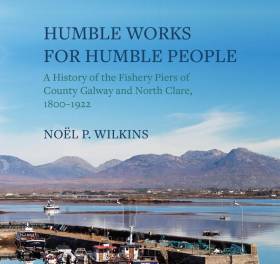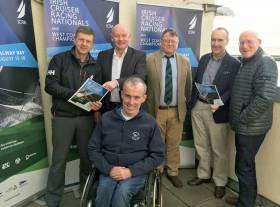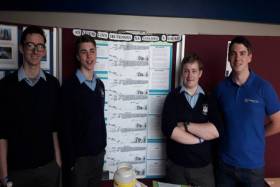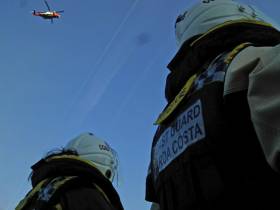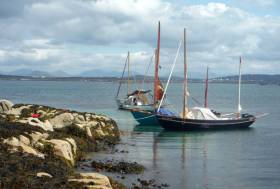Displaying items by tag: Galway Bay
Reconnecting the Land & Sea Communities of Galway Bay
A series of public meetings will take place in Ballyvaughan, Maree and Kinvara over the coming week in relation to the work of CuanBeo (the Living Bay), a recently formed community-based organisation established with a mission of improving the quality of life, environment, economy and heritage around Galway Bay.
CuanBeo is specifically working to reconnect the Land and the Sea communities of South East Galway Bay from Rinville Point to Blackhead Point and the villages and towns within its catchment.
CuanBeo is hosting three public meetings in the Maree Community Centre (17 April), Merriman Hotel, Kinvara (18 April) and the Burren College of Art, Ballyvaughan (19 April). All meetings start at 7.30 pm and will end at 9.00 pm.
The public meetings will give locals a chance to get involved with CuanBeo and to meet staff from agencies involved in the development of Galway Bay and adjoining land areas on the Clare and Galway coast. The evening will include an overview of the work of CuanBeo, the economic, heritage, community and recreational value of the Bay and the work of CuanBeo in reconnecting the Land and Sea communities of South East Galway Bay
More information here
Galway Bay Sailor Dave FitzGerald Celebrates the Big Nine-0
His many friends in international sailing and the global mining industry will be delighted to hear that the legendary Dave FitzGerald celebrated his 90th birthday at a very convivial gathering of family and close friends in the Royal St George YC in Dun Laoghaire at the weekend, hosted by his daughter Grainne writes W M Nixon.
Dave FitzGerald is best known as a legend of west coast and particularly Galway Bay sailing, but these days he lives in Dublin to be near his daughters, and old shipmates from the west coast came across country to join the great man as he entered his tenth decade.
His careers in mining and sailing - and indeed sports generally - are all decidedly high-powered. He is renowned for his utter fearlessness in the hunting field, and he brought the same total enthusiasm to his sailing. When he owned the 40ft sloop Partizan in the early days of the Round Ireland Race, he was a committed supporter of this new event starting and finishing in Wicklow. This meant that in order to participate, Partizan had to sail round Ireland twice, but it was the sort of thing the great men and women of west coast sailing could take in their stride.
When sailing took over from hunting for the summer season, if not racing he would go cruising – sometimes very extensively - and he was a popular member of the Irish Cruising Club, elected in 1966. In those days, cruising boats were few and far between on the Atlantic seaboard, but Dave encouraged others to take part in a sport which is now thriving in that challenging area. Meanwhile, he became part of the ICC administration, moving up through the committee and various offices until on the advent of the new Millennium in 2000, he became the ICC’s first Commodore from the west, hosting many memorable events.
Dave FitzGerald’s long and very active life has encompassed several eras of sailing, and seen many changes in design and boat use. When he returned to Ireland after very impressive experiences in some extraordinarily remote mining operations in many parts of the world, it was to develop Tynagh Mine near Loughrea in County Galway. Having decided that the area would be his longtime base of operations, and that Galway Bay would be his new sailing home, he bought his first cruiser in Dun Laoghaire, a little Snapdragon 26 which he called Pegeen.
Being impatient to start sailing in Galway Bay as soon as possible, he researched the best way of having the new boat delivered across country, and discovered that owing to some clerical oversight, the freight rate charged by CIE Rail for such a boat from Dun Laoghaire station to Galway by flatbed rail-truck was precisely 7/6d – seven shillings and sixpence, or about 38 pence in today’s pound sterling.
Apparently, no boat had been moved in this way for a very long time, and so the freight charges were still at 19th Century rates. So Pegeen - conveniently a twin keeler – was moved across Ireland to Galway Bay with no trouble at all at a pocket-money price, and Dave FitzGerald was launched into a new chapter of his remarkable sailing career which, with his many other adventures, was celebrated in proper style at his 90th birthday party.
Storms Eleanor & Her Sisters Leave Multiple Damage
It will take some time to fully assess the many damaging effects of Storm Eleanor, which this week barrelled into Galway Bay in a very focused tunnel of extreme winds just as an exceptionally high Spring Tide was hitting the city and the Bay’s eastern shore, causing widespread flooding. The storm then tore a swathe of damage on a northeasterly path mainly through Roscommon, Leitrim, Fermanagh, Tyrone, Antrim and some adjacent counties, before curving round to spread mayhem across a wide area of northern England and gathering further power as it swept into the Continent.
At some stages, several storm centres seem to have developed, so maybe it’s unfair to blame Eleanor for all the devastation. But here’s no doubt she was the guilty party in Galway city, where the usually friendly areas of the characterful old town were flooded in a particularly destructive way, made all the more so by the pleasantly hospitable associations this part of the town has for so many of us.
Yet in the post-storm distress, icons of bizarre survival have emerged. Galway Bay SC sailor Aaron O’Reilly sent us this brief video of the clinker-built fishing boat which ended up perilously balanced – but miraculously secured – right on top of the pier across the Corrib from the Claddagh.
David Whitehead 1942-2017
Irish sailing is mourning the loss of someone very special with the death of Dave Whitehead of Kinvara. In his close and strong family circle, throughout an international circle of friends, and among many more in the Galway Bay area, the loss is made more poignant by the fact that he was a very active 75–year-old, brimming with plans for the future, and keenly interested in every aspect of the world today, both within and beyond sailing.
His life story is a tale of our times. From Monkstown in County Dublin, he was of a technically-minded family – a great-grand-uncle had invented the Whitehead Torpedo, the first in the world. Young David had started his sailing in Dublin Bay, but after graduating in geology from Trinity College, his career path was in mining, which eventually took him to many corners of the globe, some of them very remote, and others also very far underground.
However, an early position in the late 1960s was with Tynagh Mines in the southeast of County Galway, headed by Dave FitzGerald who shared his love of sailing. For a while they were much involved with the little sailing club which functioned at the time on the lake at Loughrea. But the call of the sea and the possibility of a club being established on Galway Bay drew their sailing interests westward, and during the early 1970s David Whitehead contributed much to the early life of Galway Bay Sailing Club, which was being spearheaded by determined enthusiasts like Pierce Purcell and others.
Dave had maintained his friendships with Dublin Bay sailing, and through John Bourke with Jack McKeown’s S&S 34 Korsair, he was able to introduce the new sailors of Galway, who at that time were experimenting with being based on Lough Atalia immediately east of the city, to the invigorating realities of offshore racing with ISORA.
Dave himself was soon to go on to become elected to both the Irish Cruising Club and the Royal Ocean Racing Club. But meanwhile in Galway the neophyte club accepted his and David FitzGerald’s advice that they should locate their main sailing base at Renville near Oranmore at the head of Galway Bay, and soon Dave Whitehead was making an active input to the GBSC as a sailor who introduced some interesting craft to the growing fleet at Renville, and as a member of the committee.
 Always absorbing information. Dave Whitehead taking on board some new facts while on passage from the Azores to Ireland in 2008. Photo: Ed Wheeler
Always absorbing information. Dave Whitehead taking on board some new facts while on passage from the Azores to Ireland in 2008. Photo: Ed Wheeler
The Honorary Secretary in those early days was Marie White, and in each other they found kindred spirits, and were married. They shared the hope that they would live in due course on the shores of Galway Bay, but to achieve that Dave first had to see through a very concentrated international career in mining. In this, with Marie’s support, he was very successful, working extremely hard both in the field and in board-rooms, rising rapidly through the ranks to achieve positions of significance in the leading global commodities firm Billiton – at the time of his death last week, he was chairman of a number of Billiton’s London-based subsidiaries.
He and Marie had long since also succeeded in returning to Galway Bay, buying The Glebe in Kinvara and turning it into an idyllic family home. As for sailing, his interest was if anything greater than ever, and though he had always made a point of finding the best sailing within reach of wherever his various mining jobs took him, his heart was with Galway Bay, where he went though an intriguing array of boats ranging from the Quarter Tonner Frantic aboard which many young GBSC sailors took their first steps afloat, to the classic miniature S&S 27 Shemite – all of them boats which have remained with the Galway Bay fleet under new owners.
One he’d achieved his dream of finally settling in the west (where, during his and Marie’s absence abroad, the members had built the first GBSC clubhouse at Renville in 1979) Dave Whitehead was able to put experience gained at many other sailing centres to good use. Though he’d never had any formal training in race management, Pierce Purcell fondly recalls that he proved a natural as a Race Officer, providing his services with enthusiasm, and running things afloat very competently and without fuss.
But by now his main enthusiasm in sailing was in cruising, while in life generally it was about learning even more to add to the huge stock of knowledge in his already well-furnished brain, and its deployment on the lively discussions which he relished. Fellow Irish Cruising Club member Ed Wheeler, himself no slouch when it comes to conversations in depth, recalls a voyage home from the Azores crewed by Dave: “The wind-driven autohelm was working very well, so inevitably at mealtimes, and indeed at many other times, there were discussions as we sailed along. You might think you had talked Dave around to your way of thinking, but then he would come up with some totally unexpected but indisputable and perfectly-remembered scientific fact from his warehouse of mental information, and the argument was back to square one”.
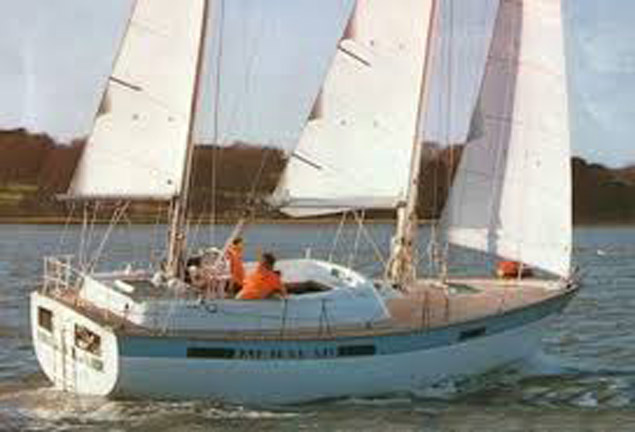 The unusual dreamship. While Dave Whitehead’s smaller gunk-holing craft were often of traditional appearance, much of his offshore cruising was done with the highly-individual Oyster Mariner 35 Joyster, a Holman & Pye design which packed an astonishing amount of accommodation into a compact hull which performed very well
The unusual dreamship. While Dave Whitehead’s smaller gunk-holing craft were often of traditional appearance, much of his offshore cruising was done with the highly-individual Oyster Mariner 35 Joyster, a Holman & Pye design which packed an astonishing amount of accommodation into a compact hull which performed very well
Typically of Dave Whitehead, when making a Transatlantic passage as crew with Marie aboard La Contenta in the ARC of 2003, the very fact of the boat being well equipped with the latest in electronic navigation aids prompted him to bring along traditional bits of gear to calculate their position, and by the end of the voyage not only was he getting his calculations absolutely spot on, but he had worked out ways of simplifying the time-honoured methods used by the likes of James Cook and other great voyagers.
For his own principle cruising boat, he was for many years content with the ingeniously-laid-out Holman & Pye-designed Oyster Mariner 35 ketch Joyster in which he voyaged near and far, and was rewarded with ICC and GBSC trophies. But from the moment he settled in Kinvara, he was also fascinated by the miniature cruising possibilities – the “gunk-holing potential” – of the much-indented southern and eastern shores of Galway Bay. To explore them properly, he went through an almost bewildering variety of small specialist cruisers with lifting keels and easily-handled rigs which enabled him to get to places where no cruising boat had ever been seen before.
With his base now in Kinvara, he could also contribute to the changes in the perceptions in the rest of Ireland of the level of sailing in the west, and together with Dave FitzGerald, he was much involved in a major re-balancing of the structure of the Irish Cruising Club. This began with an increase in western-based Committee members, then there was a western Rear Commodore, and eventually Dave FitzGerald served as Commodore from 2000 to 2002, while Dave Whitehead was Rear Commodore from 2006 to 2008, and Vice Commodore from 2009 to 2011.
In his later years, he made the shrewd judgment that the unpretentious but very cleverly-designed Moody 27 was the ideal boat for his main cruising needs, while continuing to work with specialists like boat-builder Tiernan Roe of Ballydehob in West Cork towards creating the perfect gunk-holing cruiser for places “where the water is very thin”.
In sailing the Moody 27 Mystic, he found an ideal crew in the equally individualistic Peter Fernie who lives on Tawin Island, which is well out in Galway Bay, though connected by a causeway to nearby Ireland. As matched spirits, they moved into an ownership partnership which worked very well, and a round Ireland cruise with an extended visit to the Hebrides in 2016 saw them being awarded GBSC’s David Baynes Cruising Award in the face of some formidable competition.
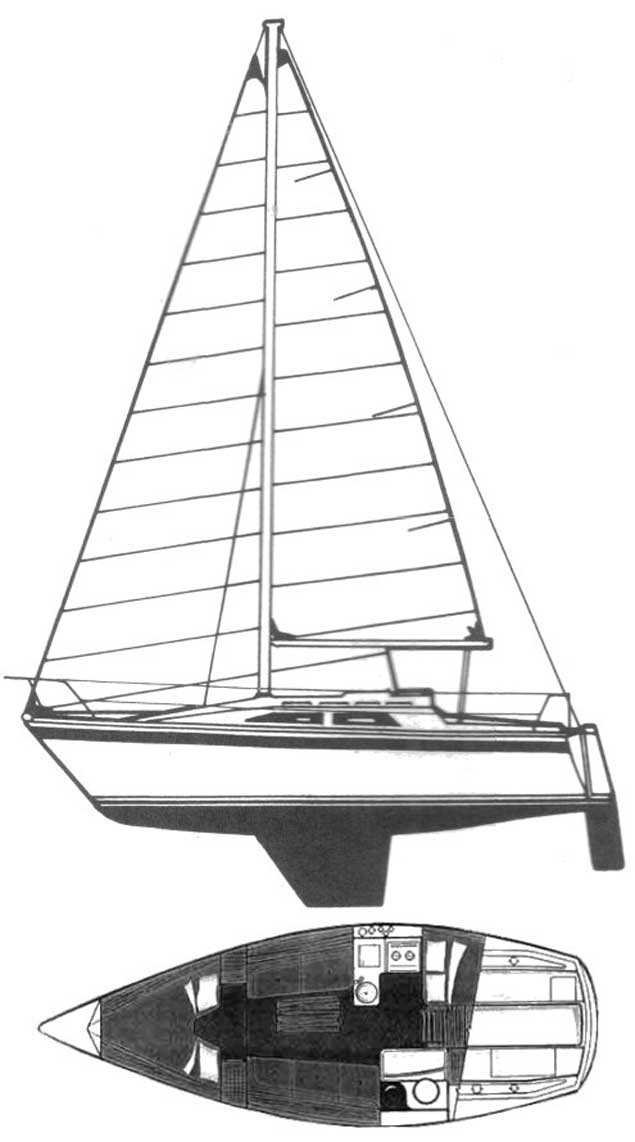 David Whitehead’s last seagoing cruiser was the Moody 27 Mystic, which he latterly co-owned with Peter FernieIt is Peter Fernie’s response to the death of David Whitehead which best captures the essence of this remarkable man, and with his permission, even though it re-phrases some of what we’ve already said, we are honoured to publish it here:
David Whitehead’s last seagoing cruiser was the Moody 27 Mystic, which he latterly co-owned with Peter FernieIt is Peter Fernie’s response to the death of David Whitehead which best captures the essence of this remarkable man, and with his permission, even though it re-phrases some of what we’ve already said, we are honoured to publish it here:
“David Whitehead: A memoir by Peter Fernie
David Whitehead was never lost for words. Whether it was boats, or maritime history in general, mountaineering or rugby, climate change or electric cars, you could be certain that David would have a well thought out position. More often than not, his was a contrary one to the accepted or establishment view, but a position backed up by his incomparable memory.
Despite his losing keys and mobile phones like the rest of us, I often wondered whether David had ever forgotten anything he had read or seen in the past. His prodigious recall was exemplified once when sailing up the Cleddau River in Wales, above Milford Haven. This location was not part of our plan, but we had ended up there en-route to Brittany, owing to a number of engine-related difficulties. David spied a moored wooden cutter, and we sailed across to get a closer look. Triumphantly he said: “That’s Driac” and proceeded to give me a detailed history of the 1930s Nicholson built boat: her original owner and cruises, as well as various assorted related ephemera comprising the establishment of the National Maritime Museum in Greenwich, and the evacuation of the B.E.F. from Dunkirk. I always assumed that he had this stuff printed on the back of his eyelids. In the event I googled Driac when I got back home – he was absolutely accurate.
Moving to Galway in the ’60s, he had sailed up and down the west coast and further beyond with David Fitzgerald (ICC). His training as a geologist found him working with mining concerns around the world but wherever he was, he found time to sail. He was a founder member of Galway Bay Sailing Club and became a member of the Royal Ocean Racing Club and the Irish Cruising Club in 1972. He became a member of the Royal Cruising Club in 2008.
He had raced and cruised many different boats since his days in Trinity College, Dublin. He had owned boats large and small from his first, a 16 foot Paul Gartside designed gaffer to his latest, Goblin, a 16 foot Chesapeake Bay microcruiser which he adapted for gunkholing around Galway Bay creeks.
In 2009 whilst Vice Commodore of the Irish Cruising Club, he was diagnosed with lung cancer which he attributed to working in an Australian uranium mine. Nevertheless, and despite major surgery he was sailing his Oyster Mariner 35 Joyster three months later to Tory Island and Lough Swilly. Despite a continually compromised respiratory system, David never let this get in the way of his sailing, with cruises to Wales, Brittany, the Isles of Scilly and the Aeolian Islands as well as the south and west coasts of Ireland. In 2016 we sailed from Galway to the Hebrides and back around Ireland clockwise to Galway in our Moody 27 Mystic.
This year, he was sailing in Galway Bay several days before a forthcoming hip replacement operation. Next year was to be an extended cruise to Galicia, as well as a gunkholing cruise in Roaring Water Bay.
He was an excellent shipmate and a great companion. He could be uncompromising and pedagogic but was never boring. He was unremittingly positive about life and dwelt always on the future whilst enjoying the past. He will be missed by many”.
Our heartfelt condolences are with David Whitehead’s wife Marie, his son Duncan, his daughters Jennifer and Siobhan, his daughter-in-law Kerry, his grandchildren, and his extended family and very many friends. May he rest in peace.
WMN
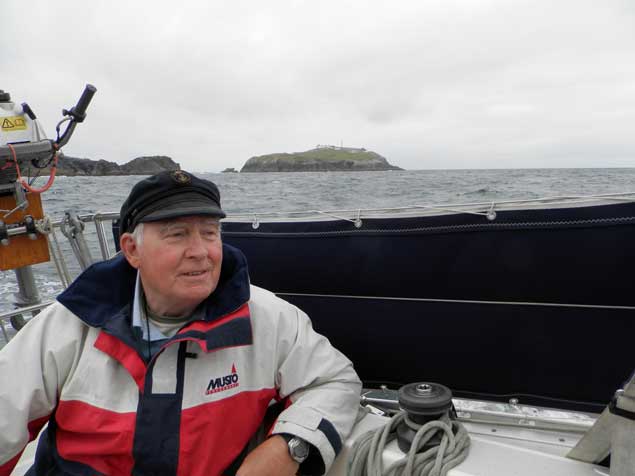 The last major cruise. Dave Whitehead at the helm of Mystic in June 2016, emerging from Broadhaven in Mayo, bound for the Hebrides with Eagle Island to seaward. Photo: Peter Fernie
The last major cruise. Dave Whitehead at the helm of Mystic in June 2016, emerging from Broadhaven in Mayo, bound for the Hebrides with Eagle Island to seaward. Photo: Peter Fernie
#Books - Humble Works for Humble People is the title of a new history of the fishery piers of Galway Bay around coastal Galway and North Clare by Dr Noel Wilkins, a retired professor at NUI Galway.
The book charts more than three-quarters of the small man-made piers and quays built around the bay, the vast majority of them in Connemara at the height of the Great Famine.
The book serves as a timely reminder of “harsh coastal realities”, according to The Irish Times’ Michael Viney, who is prompted to recall his own misadventures with a traditional currach on the shores of South West Mayo.
Also available in time for Christmas is Connemara & Aran, a large-format collection of photographs by the late Walter Pfeiffer, who died this past spring.
The Irish Times has more on both books HERE.
Buy the book here.
Galway Bay ICRA Cruiser National Championships 2018 is Launched
The 2018 ICRA Cruiser National and WIORA West Coast Championships have been launched at the Port of Galway offices.
The national cruiser championships will be organised by Galway Bay Sailing Club and will combine both the Irish Cruiser Racing top event and the West Coast Championships between the 15th and 18th of August, a later date than normal for the annual event and the first time for Galway Bay.
Captain Brian Sheridan from Port of Galway has arranged free cranage and berthage for the duration of the event.
The organising committee for the championships have already launched several very keenly priced entry packages starting with a super early bird from now until the first of February 2018.
Announcing the launch of the super early bird packages, which start at €175, the event chairperson, Martin Breen said: “We are looking forwarding to welcoming boats from far and wide to Galway for ICRA Cruiser Nationals and WIORA West Coast Championships 2018."
"Galway is one of the country’s most vibrant spots during the summer and we are confident that the arrival of a large fleet to Galway for the event will add an exciting extra dimension to the city.” said Mr. Breen. With regard to entering the championships he also said, “We would strongly encourage skippers to avail of the extremely good value entry fees now available and also to book their accommodation early”.
ICRA/WIORA Commodore Simon McGibney said “We are very excited that the ICRA Nationals are coming to Galway for the first time. Galway has a reputation for organising great events and the organising committee is working hard to bring the Galway seal of greatness to our event."
He also added that: "the event also brings forward an opportunity for the Cruiser Racing fleet to contribute to the development of top level racing in areas of the country that are often in need of that extra kick to attract more people to top level racing competition. We expect that these championships will be supported by our fleet and this will contribute to the national effort to promote sailing in Ireland'.
The committee is already very well advanced in their planning and looking forward to sharing more details in the coming weeks.
The Notice of Race is now available for download below.
TY Pupils’ Marine Science Experiment Ends Up In Scottish Waters
#MarineScience - Transition Year pupils from Coláiste Croí Mhuire in Spiddal learned recently that a tracking drifter device they were using to measure the surface currents of Galway Bay before it was lost ended up off the coast of Scotland, where it was found by a local fisherman.
The device was part of a marine science project carried out by TY students Páraic Ó Cualáin, Cian Colfer, Ruarc Ó Comhghain in the run-up to the SciFest Exhibition at GMIT.
The three students working on ‘Project Canister’ released four canisters into Galway Bay, each with a GPS transmitter and battery, designed as simplified Lagrangian drifters.
“Seeing if the drifters would make it to the Aran Islands, the students collected data to better understand the circulation and movements of the surface currents within the Bay and how the currents are influenced by other factors such as tide and wind,” explained Conall O'Malley, scientific and technical officer at the Marine Institute, whose ocean modelling team assisted the student with background research on tide and wind data.
“The visit helped the students gain an appreciation of the amount of data and work that is required to produce reliable ocean current models, which in turn helped the group in deciding where to deploy the drifters in the bay.”
Four drifters were deployed in total, each with its own unique identifier so that they could be tracked efficiently. Two of the drifters ended up off the coast of Clare at Fanore, where they made landfall within 1km of each other three days apart. A third canister was recovered from Rossaveal in Connemara after 10 days.
"Remarkably, the fourth canister, which was deemed to have been lost somewhere in Galway Bay after three days when its GPS transmitter failed, was recently recovered 136 days after its launch in Scottish waters by a fisherman named Donald Brown," said O'Malley.
Alan Berry, team leader at the Marine Institute added: “After traveling 600km in the ocean currents around the west coast of Ireland and then recovered from Gott Bay off the Isle of Tiree, the most westerly of the inner Hebridean Islands off the coast of Scotland, it has been a great end to the tale of the lost drifter.”
“The students were delighted that the lost drifter was found so far away, and this adds to their on-going scientific learning and understanding of the ocean. This experiment certainly shows the importance of the ocean and highlights how we are all interconnected by the sea locally and internationally," said Dr Margaret Keady, science teacher at Coláiste Croí Mhuire.
Colaiste Chroi Mhuire principal Triona ní Mhurchu also thanked the Marine Institute’s ocean energy team, who assisted the Transition Year class with three other SciFest projects.
“Having the SmartBay Observatory in Galway Bay, which is the only place in Ireland and one of the few places in Europe where we can see, hear and count what is happening under the water, in real time, is certainly a welcomed resource for our school, our community as well as researchers at a local and national level,” she said.
Other marine science projects by the TY class were a study to determine whether Galway Bay supports its own population of dolphins, by Tessa Croke, Róise Nic Dhonnagáin, Rachel Nic Oireachtaigh; a smartphone app for sea swimmers in Spiddal, by Marcus Reinhardt, Bianca Ní Dhonabháin, Dylan Whelan, Elana Nic Fhannacha; and a study to determine the age of the fish we eat, by Máire Ní Fhrighil, Líadh Robertson, Caomhín Ó Sé, Aoife Nic Chormaic, Rosie Ní Dhubhghaill, Rebecca Ní Allúráin.
“The projects completed by the students also showed the amazing variety and potential opportunities that there are in marine science research and careers, particularly for those who are interested in ocean industries and technology development involving ICT, engineering, marine science and environmental studies,” said Berry.
Items Found On Mayo Beach Could Belong To Missing Rescue 116 Crew
#Rescue116 - A lifejacket and helmet washed up on a beach near Blacksod in Co Mayo this weekend may belong to one of the two missing crew from the Rescue 116 tragedy earlier this year, as RTÉ News reports.
The items, which were attached together, were discovered on the shore near An Clochar yesterday morning (Saturday 30 September).
A detailed search of the area has been hampered by poor weather, with no other items found.
Winch operator Paul Ormsby and winchman Ciaran Smith have been missing since the Irish Coast Guard helicopter went down at the island of Black Rock, west of Blacksod, on 14 March.
Capt Dara Fitzpatrick was recovered at the scene but was pronounced dead in hospital shortly after. The body of Capt Mark Duffy was recovered some days later.
Elsewhere, the body of a middle-aged man was found washed up on Inis Meáin in Galway Bay last night.
RTÉ News says the discovery comes almost a fortnight to the day after a Russian national was swept into the water while sea angling near Doonbeg, some 36km south of the Aran Islands.
There was better news for the families of two fishermen feared missing in Galway Bay overnight, as the Irish Examiner reports.
Aran Islands RNLI and the Shannon-based coastguard helicopter Rescue 115 were involved in the search last night and early this morning for the pair when they were reported overdue.
But the search was called off around 10.30am when the small fishing boat, which has suffered technical issues in “challenging” conditions, returned to port under its own power.
Rescue 115 was earlier requested for a medevac from Inis Mór to University Hospital Galway.
Marine Notice: Spiddal Wave Energy Test Site Decommissioning Works
#MarineNotice - The latest Marine Notice from the Department of Transport, Tourism and Sport (DTTAS) advises of the decommissioning of the wave energy test site in Galway Bay.
The decommissioning of the Marine Institute's wave energy site will involve the removal of four cardinal marks and a wave monitoring data buoy, and the establishment of a new special mark denoting the presence of the Galway Bay Subsea Observatory on the seabed at the site off Spiddal.
The Chateau Thierry (Callsign EIHK6) was scheduled to arrive in Galway Bay this week between Monday 11 and next Monday 18 September. This operation is expected to last two days, depending upon weather or other operational conditions.
It is anticipated that the decommissioning operation will be completed on or before Tuesday 19 September.
The Chateau Thierry will display appropriate lights and markers. The work vessel will be broadcasting and listening on VHF Channel 16 during the decommissioning.
Full details of co-ordinated of the relevant work areas are included in Marine Notice No 38 of 2017, a PDF of which is available to read or download HERE.
Galway Bay Can Make it Happen While Other Places Wait for Development to Come to Them
Irish sailors don’t need their attention mesmerized by the horses and people clattering around the Galway Races Week to be well aware that in sailing matters too, it’s not a question of whether or not the West’s awake writes W M Nixon. On the contrary, you’d wonder do the hyper-energetic sailors around Galway Bay ever sleep as they implement one bright new idea after another, for these days the coastal facilities are being developed at a pace which few other popular sailing areas can match.
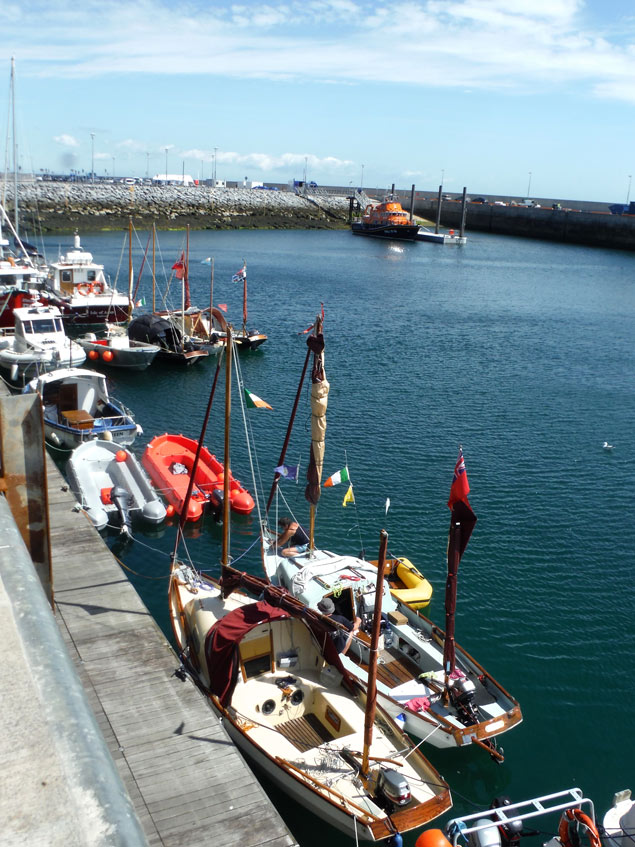 Just a week after the WIORA fleet had been in town, the Drascombe flotilla were one of the first cruising groups to use the new pontoons at Kilronan on Inishmore. Photo: Jack O’Keeffe
Just a week after the WIORA fleet had been in town, the Drascombe flotilla were one of the first cruising groups to use the new pontoons at Kilronan on Inishmore. Photo: Jack O’Keeffe
Until recently in southeast Connmemara, Rosamhil (or Rossaveal as the East Coast might know it) was mainly thought of as a busy fishing port and the ferry port for the Aran Islands. But a while back, it acquired a 34-berth marina which has proven so popular that in October this year the Harbour Master, Captain John Donnelly, will be overseeing the official opening of a brand new facility, a fully-serviced 160-berth marina which will be attractive both to locals and those from further afield and abroad who are taken with the notion of berthing their boats on the threshold of some of the most enchanting sailing waters in the world.
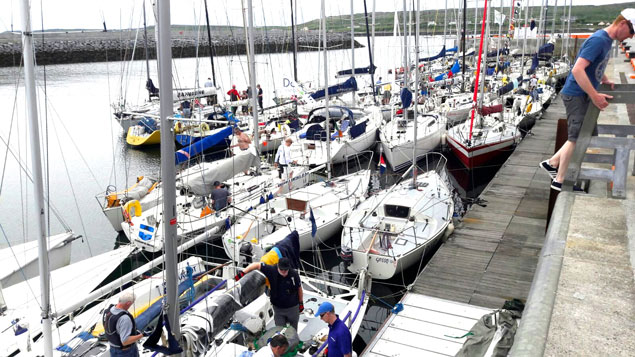 Packing them in. A week before the Drascombes arrived, the WIORA fleet had landed in on Kilronan big time
Packing them in. A week before the Drascombes arrived, the WIORA fleet had landed in on Kilronan big time
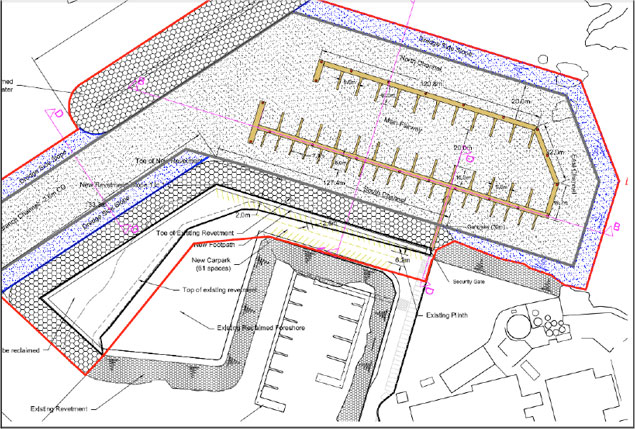 Meanwhile across on the mainland, the new marina at Rossaveal is nearing completion
Meanwhile across on the mainland, the new marina at Rossaveal is nearing completion
But while this is now almost completely in place, towards the head of Galway Bay the port of Galway itself is contemplating another expansion with marina facilities, while across the bay at Renville, as we’ve mentioned on Afloat.ie, Galway Bay SC has recently made a very clever job of improving its clubhouse, and it is surely only a matter of time before developments in waterfront berthing take place there too.
But the extra-special breakthrough which has best expressed the Spirit of the West has been the installation of the long L-shaped pontoon in the much-extended Kilronan Harbour on Inishmore, the largest of the Aran Islands. This was planned to be done in time for the mighty successful West of Ireland Offshore Racing Association Championship just over three weeks ago, and the new setup accommodated the 44-strong fleet in such style that a casual observer might gave though that this was all a permanent new fixture.
Certainly the way that the WIORA sailors partied for their après sailing there and in downtown Kilronan would if anything have reinforced such a view. Yet in theory those pontoons are just a temporary arrangement. And they were put there in a shared voluntary effort which would put some of our more hidebound maritime communities to shame for its sheer enthusiasm and energy.
Those who were promoting the Kilronan Berthing Project - not least WIORA Championship Organiser Cormac Mac Donncha – argued that with all of the new berthing capacity in the city and in Rossaveal, those boat owners would need somewhere to visit and berth safely. This is where the pontoon in Kilronan comes in, with the benefits going well beyond recreational sailing. The users will include the small ‘pot haulers’ owned by the local fishermen, commercial angling boats, commercial charter sailing yachts, visiting motor vessels, and yachts.
Galway County Council were very supportive of the project. Patrick McDonagh, Kilronan Harbour Master, provided supervision and advice throughout. Ciarán Wynne, Harbours Engineer, Galway Co Co, provided the promoters with the various permissions to go ahead with the project. The pontoon was installed by the voluntary effort of local business men and volunteers, in a heartening community spirit.
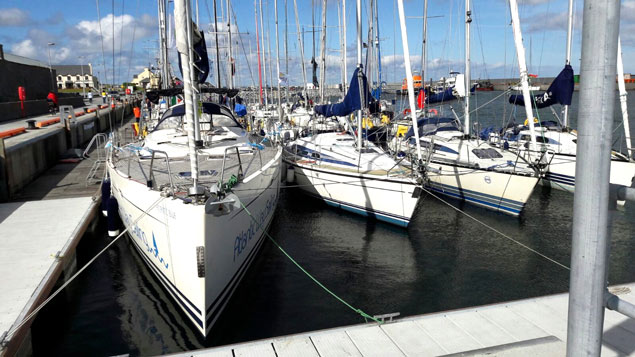 As soon as it was very competently installed, the new Kilronan pontoon had a fleet in port to show it at its best.
As soon as it was very competently installed, the new Kilronan pontoon had a fleet in port to show it at its best.
The pontoons themselves were supplied on loan by Inland & Coastal Marinas, based in Banagher on the Shannon. Iggy Madden Transport of Galway, provided the transport without charge. Galway Harbour Board supported the storage and crane operations at Galway Docks and Lasta Mara Teo transported the cargo to the Islands and dropped 16 mooring blocks. LM Keating installed the pier beams, and OceanCrest Marine supplied the special pontoon to H-Beam bracketry. ThermoKing, the Beatty family and Club Seoltóireacht Árainn provided the skilled crew to install the pontoons and make them safe.
Inland & Coastal has extended the loan of the pontoons so that the local committee can attempt to put a plan together to purchase and upgrade them to form a permanent facility. A very significant proportion of the project’s cost lies in the selection, transportation and installation of the pier beams and pontoons. Galway Co Co are working with the committee to try to find a funding solution to upgrade the existing ‘marina’. It has been recognised that, if the pontoons are returned to Inland & Coastal at this stage, then a large percentage of the cost will need to be duplicated in order to reinstate the marina at a later stage.
 A touch of the Med in Kilronan. WIORA even had St Pat’s Brass Band (left) to welcome them in.
A touch of the Med in Kilronan. WIORA even had St Pat’s Brass Band (left) to welcome them in.
So efforts to seek funding are currently underway. You just can’t see it not happening, and a longer term objective might be the installation of an access bridge, as the 5 metre tidal range can make that quay wall seem very high. Once the sportsmen and revellers of WIORA had gone on their way, there was ample and much-valued space for local boats of all type, and then a week later the Drascombe Association of Ireland arrived in a fleet from Roundstone in the midst of their week-long Galway Bay Cruise-in-Company. Even though a Drascombe can be hauled up a beach if need be, every last one of them was delighted with the convenience and comfort which the new pontoon provided.
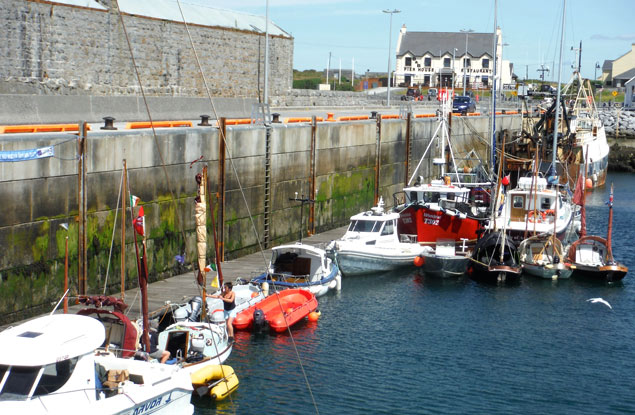 Drascombes and other boats at Kilronan pontoon – as convenient as possible for the pub. Photo: Jack O’Keeffe
Drascombes and other boats at Kilronan pontoon – as convenient as possible for the pub. Photo: Jack O’Keeffe
Seen from a go-anywhere Drascombe, Galway Bay becomes the cruising paradise its advocates have always insisted is there, waiting to be discovered. The Drascombes, co-ordinated by Jack OKeeffe of Cork and Brian Park of Limerick, had mustered at Kilkieran, and then cruised along the coast to Finnish Island before heading for Roundstone. Mac Dara’s island came up on the programme, and then there was an open water passage out to Kilronan and the luxury of a secure marina berth at the end of it.
They’d hope to cruise among the Aran Islands in detail, but the weather was going to pot and they decided to get on with the next stage of their programme. So as pre-arranged, the open boats headed back to Kilkieran and the cabin Drascombe boats made a passage across to Ballyvaughan in the foothills of The Burren in County Clare, which left them well-placed for detailed exploration to fresh places such as Leenane’s renowned seafood bar at New Quay, followed by the winding waterways of Bell Harbour.
Kinvara was a natural stopover port, and they finally brought it all to a successful conclusion back at Galway Bay SC at Renville, firmly convinced of the unique attractions of the greater Galway Bay area as a cruising ground, and one hundred per cent supportive of the notion that the new pontoons at Kilronan should be a permanent feature.




























